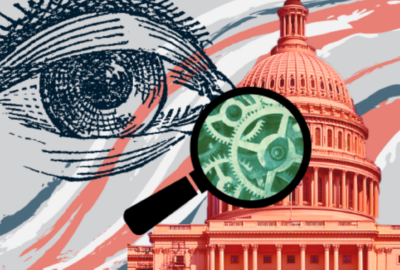If the pandemic proved anything, it’s that the federal government must rethink response and mitigation strategies for large-scale medical events. Investments must ensure flexibility and resiliency.
At the global level, challenges in public health approaches and in supporting supply chains become particularly pronounced. Public health and emergency management officials need to apply lessons learned to everything from the content of medical stockpiles and how they’re managed, to the organizing frameworks that ensure the most effective multi-agency responses.
Given the frequency of events that affect public health, and the number of governmental and private sector entities involved, the government should consider a continuous approach to readiness, embodying resiliency and adaptability. That’s according to Dr. Brandon Greenberg, who specializes in public sector resilience at LMI.
“We’re all trying to minimize risk to pandemics together,” Greenberg said. “We can’t just go with a command and control model. We have to go with a behavioral influence model to ensure that states and locals are as prepared as they need to be. So how do we ensure that the federal government is playing the right role in readiness across the nation and also in collaboration with our international partners?”
Resiliency requires attention to what Greenberg called a three-variable equation: “The first being risk management, the second being standby readiness capabilities for known events. And then the third component is adaptive capacity, where we look at how to design a resilient system without knowing what the future will hold.”
An example of adaptation occurred in the clinical trials for Covid-19 remedies, said Dr. Catherine Bigger, principal technical advisor for virology at LMI. Both the National Institutes of Health and the Defense Department launched efforts to develop remedies and conduct trials.
“There were a lot of clinical trials, and it’s now more coordinated,” she said. “More so with [the National Institute of Allergy and Infectious Diseases] effort coordinating the clinical trials. It was a little bit chaotic in the beginning. As that matures, it would be nice to have that kind of adaptability to manage clinical trials across the country, more rapidly.”
Both Bigger and Greenberg stressed the need for silos of expertise to open and ensure people in all areas of the country have access to supplies, clinical trials, and any other responses aimed at mitigating the pandemic.
Bigger said robust, cooperative relationships with industry are also key to public health response and mitigation. She cited her work while at Centers for Disease Control and Prevention, during which CDC, as well as components of the National Institutes of Health, collaborated with the pharmaceutical industry in the development of medicines to combat SARS and Ebola viruses.
Of such development, Bigger said, “It’s a lengthy process, five to ten years is probably normal. And it’s a costly process. And it requires that government-industry interaction.”
Ultimately, these lessons learned must drive the investment the government makes in response and mitigation, Greenberg and Bigger said. Take the stockpile as an example, in which materials must be rotated and for which it is difficult to predict demand. “The trick is to find the economic balance between how much do we stockpile and maintain as a buffer stock or buffer readiness,” Greenberg said, “versus how much do we invest in capabilities to produce rapidly if we need to.”
Many levels of response and readiness that need to occur across the state, local, territorial, and tribal nations that need to coordinate with the federal government. It's not just about plans and training and exercises. It's also about deep thought, about how all of our communities come together to respond to a collective goal.
Dr. Brandon Greenberg
Fellow, Resilience, LMI
It would be nice to have that kind of adaptability to manage clinical trials across the country and internationally, more rapidly. Not every site in the country is necessarily equivalent in their ability to successfully run a clinical trial or run it to the level of the next site. So that is something that we could look at and improve.
Dr. Catherine Bigger
Principal Technical Advisor, Virology, LMI
Copyright
© 2024 Federal News Network. All rights reserved. This website is not intended for users located within the European Economic Area.









